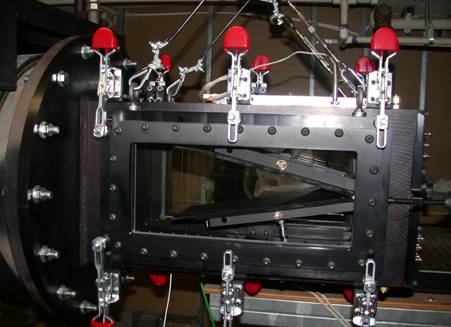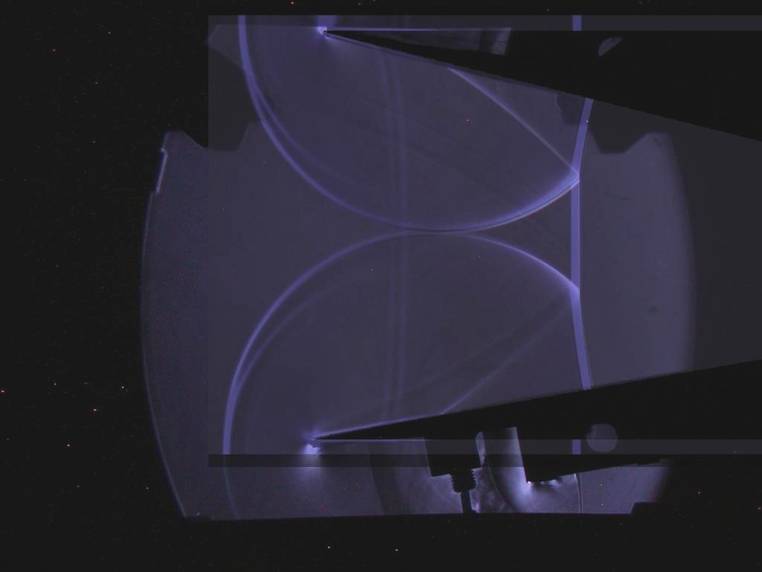Phase 0 of the Caltech ASC converging shock experiments.
A single gas is used, the shock interacts with the boundary of the wedge producing shock mach stems, reflected shocks and triple points. The focusing of the shock is achieved by the successive reflection of the shock.
The experimental considerations :
- Nitrogen (gamma = 1.4, molecular weight 28)
- The wedge apex is desingularized by a 1/4 inch screw
- A Mach 1.5 shock and a Mach 1.9 shock
Some
early simulations of the Mach 1.5 Phase 0 and some
additional simulations of the Mach 1.92 case. The
code is documented and the VTF repository holds the
Phase 0 input files. Here is an interesting qualitative examination of the flow left in the wedge
as the shock exits.
Early experiments were complicated by the fact that an expansion from the driver section of the shocktube catches
up with the shock before the experiment is completed. Several one-dimensional simulations of the entire shocktube
were performed to investigate this expansion.
Driver based expansion.
The comparison of Schlieren images from the experiments with simulation presented some unique challenges
that had to be overcome.
Visualization issues
We have come to learn that the Mach numbers and wedge angles chosen create
what is known as a von Neumann Mach reflection or
vNR.
The experimental apparatus of P. Dimotakis:
- Plates can be angled over a range of 6-15 degrees wrt the horizontal.

Simulation comparision with experiment for Mach 1.5 (simulations by R. Samtaney):
- The sharp lines are the experiment, and the thick lines are from the simulation

Chris Bond has prepared this diagram of the test section showing the relative locations of all the pressure transducers used in aquiring data.
2-dtestsection.pdf
Unfortunately the transducer data he has aquired has had significant problems. In the interm,
to understand if the GFM will give sensible results for the pressures at the plates, numerical transducer readings
for conditions similar to run46 are examined when a conforming grid vs the GFM
numerical results The smooth humps in the pressure traces result from the
reflected shocks - note, these aren't sharper because the reflected shocks aren't really shocks, but more like a tight region
of compression waves. Here is an example
image from the same run colored by pressure.

